Have you ever questioned why 10G SFP+ modules are still so prevalent in network architectures even with the availability of faster products? Imagine for a moment that your company decides to upgrade its network speed and wants you to assist them in doing so cheaply and seamlessly. By using equipment with the appropriate 10G SFP+ modules available, you can still provide dependable, high-speed connectivity and remain financially viable. In this guide, you will discover how to evolve into 10G SFP+, what options are available to you, what to look out for when deploying 10G SFP+, and what kind of maintenance it will require.
Each phase has some helpful tips and things to consider regarding the options available to you. When it comes time to upgrade an existing network or deploy a new one, you will not only want to upgrade performance to the level needed but also want to have confidence everything will work the first time you deploy the network. Lastly, and just as importantly, not blow the budget in the process! If you understand the subject matter of 10G SFP+ modules, you can confidently have your network upgraded to be smarter and at a reasonable price. You will have the knowledge to not only choose the proper components when using 10G SFP+ modules, but also learn what to consider and avoid when getting the best equipment for your upgrade process.
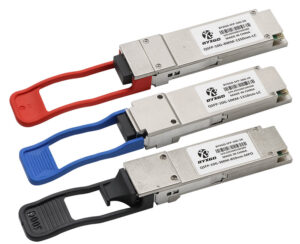
10G SFP+ Modules: Reassessing Their Value in Next-Generation Networks
10G SFP+ modules are compact, hot-swappable network interface devices that allow us to make 10 GbE connections. They can be thought of as the translating device that translates data signals—the network interface connection between our network equipment (like switches or routers) and fiber optic or copper cables. 10G SFP+ modules are suitable for delivering high throughput, low latency, and efficient power consumption while ensuring communications between multiple hardware platforms.
Although 25G and 40G technology are gaining traction, 10G SFP+ modules continue to remain relevant for a number of reasons. First, 10G SFP+ is the sweet spot for performance/price without sacrificing too much in performance or cost as compared to faster SFP+ technologies. Second, 10G SFP+ is compatible with more devices in the existing ecosystem of network switches and routers, enhancing the ease of migration when upgrading. Third, 10G SFP+ technology has matured and has some of the most proven reliability and supportability by multiple vendors.
The thought of increasing to a higher speed network (25G, 40G) is alluring and exciting, but may not always be worth the investment in new infrastructure. Most modules of higher speeds force the use of new network infrastructure as the capital and operating costs will be much higher than the cost associated with a 10G SFP+ module. Higher speeds can also introduce complexity or compatibility issues between the existing standard and still result in compromised network performance.
10G SFP+ modules can still deliver usable performance within the constraints of current best practice protocols. Using 10G SFP+ modules leverages an established technology purposefully designed to handle your efficiency and cost needs. For many organizations, a 10G SFP+ module performs properly with no unnecessary upgrades, while also strategically allowing you to evolve through the changing network landscape.
10G SFP+ Module Types: Understanding SR, LR, ER, ZR, DAC, and AOC
There are different types of 10G SFP+ modules depending on the networking requirements. Understanding the modules will help you choose the right 10G SFP+ module for your application. Let’s take a closer look at the primary types based on the principles of operation, technical specifications, and nominal use cases.
- 10G SFP-10G-SR (Short Reach)
SR modules use multimode fiber and are optimized for short distances, generally under 300 meters. They operate at an 850 nm wavelength, often used for connections in a data center and in-building. The SR module is similar to a local street for traffic—it is the local road for passing data near one another. - 10G SFP-10G-LR (Long Reach)
LR modules utilize single-mode fiber for distances up to 10 km and operate at a wavelength of 1310 nm. LR modules are used generally in campus networks or connections between buildings—this can be analogous to a more major roadway connecting neighborhoods of a city. - 10G SFP-10G-ER (Extended Reach)
ER modules use single-mode fiber and can extend between transmission stations up to approximately 40 km (1550 nm wavelength). ER modules have applications such as short-distance interconnects between data centers with miles of distance. - 10G SFP-10G-ZR (Zealous Reach)
ZR modules extend the range that can be transmitted to about 80 km, also with single-mode fiber and at a wavelength of 1550 nm. ZR modules are suitable for metropolitan or long-haul applications. - 10G SFP+ DAC (Direct Attach Copper)
DAC utilizes copper twinax cables with transceivers built into the cables for short-range and economical connections. The typical reach using DAC ranges under 7 meters in operational distances. DAC is typically used for direct connections between server racks. - 10G SFP+ AOC (Active Optical Cable)
AOC is a type of 10G SFP+ module that combines optical fiber, along with some electronics, to extend reach up to 100 meters or more. AOCs are lightweight, flexible, and very useful in environments where electromagnetic interference might impact the integrity of transmitted data.
Key Differences in Technology
| Module Type | Fiber Type | Wavelength (nm) | Max Distance | Typical Use Case | Notes |
| 10G SFP-10G-SR | Multimode Fiber | 850 | ~300 meters | Data centers, in-building | Cost-effective short reach |
| 10G SFP-10G-LR | Single-mode Fiber | 1310 | Up to 10 km | Campus, inter-building | Balanced distance and cost |
| 10G SFP-10G-ER | Single-mode Fiber | 1550 | Up to 40 km | Long-haul data centers | Extended reach with stronger signals |
| 10G SFP-10G-ZR | Single-mode Fiber | 1550 | Up to 80 km | Metropolitan networks | Ultra-long reach |
| 10G SFP+ DAC | Copper Twinax | N/A | Up to 7 meters | Rack-to-rack interconnect | Low latency, low cost |
| 10G SFP+ AOC | Optical Fiber + Electronics | N/A | 100+ meters | High-performance racks | Flexible, EMI resistant |
Recognizing these types of modules can help customize the network infrastructure to achieve the optimal price, distance, and performance balance. Each module supports a specific job, whether it is in the rack, across town, or across the country.
10G SFP+ Modules Product Lineup
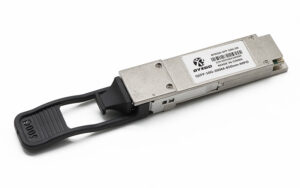
BYXGD-SFP+-10G-SR-850nm-300m: The 10Gbps SFP+ transceiver is a Multi-Mode Fiber optic transceiver with a wavelength of 850nm. It can transmit up to 300 meters, features an output power range of (-6.5~-1)dBm, and a receiver sensitivity of ≤-11.1dBm. The module consists of a PIN photodetector and VESEL laser with a 3.5dB extinction ratio, and utilizes an LC interface for connection.
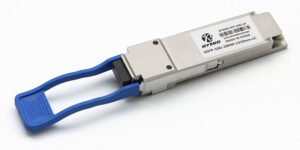
BYXGD-SFP+-10G-LR-1310-10KM: This transceiver is a 10Gbps SFP+ that uses single-mode fiber with a wavelength of 1310nm and has a distance of up to 10 kilometers. It has an output power of (-6~+0.5)dBm, a receiver sensitivity of ≤-14dBm, and uses a PIN photodetector and DFB laser. It has an extinction ratio of 3.5dB. It has an LC interface and operates in the 1270-1610nm range.
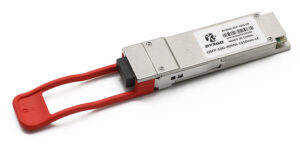
BYXGD-SFP+-10G-ER-1550nm-40KM:This 10Gbps SFP+ transceiver, designed for single-mode fiber, operates at a wavelength of 1550nm over a transmission distance of up to 40 kilometers. The transceiver provides an output power of (-1~+4) dBm and features an optical receiver sensitivity of ≤-16 dBm. The transceiver utilizes EML laser and PIN photodetector technologies, has a 6 dB extinction ratio, and is compatible with an LC interface.
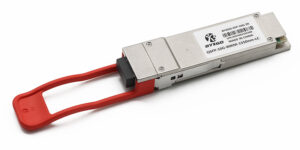
BYXGD-SFP+-10G-ZR-1550nm-80KM: The 10Gbps SFP+ transceiver employs single-mode fiber at a 1550nm wavelength and transmits up to 80km. The power output range for this transceiver is (0~+4)dBm, with a receiver sensitivity of ≤-24dBm. It uses an APD photodetector and EML laser. It has an extinction ratio of 8.2dB and features an LC interface.
How to Choose the Right 10G SFP+ Module Based on Network Requirements
Choosing the correct 10G SFP+ module requires an assessment of distance, budget, and the resulting topology. All three factors play a key role in value and performance.
Distance Determines the First Step
- Short distances (300 meters or less): sfp-10g-sr using multimode fiber is the best choice for inter-building connections and data centers.
- Moderate distances (up to 10 kilometers): use sfp-10g-lr, utilizing single-mode fiber, which is most appropriate for campus networks or enterprise applications.
- Long distances (40 kilometers and greater): modules like sfp-10g-er or sfp-10g-zr are most appropriate for data center interconnects or spanning metropolitan distances.
- Very short, direct connections (under 7 meters): DAC cables are the best choice as they pair devices in the most cost-effective and lowest latency configuration possible.
Budget vs. Performance: Finding the Sweet Spot
The budget significantly affects your choices in modules. Multimode modules, like the SR, are usually less expensive than single-mode modules. However, you can’t expect multimode modules to support the same distances as single-mode modules; so single-mode modules will have a greater cost but allow for longer distance options. It’s also worth noting that DAC cables tend to be the most economical option if you require very short distances with minimal latency. Active Optical Cables (AOC) come with a higher price point but will offer less electromagnetic interference and provide additional flexibility.
As another way to view each option, you can think of the multimode modules, such as the SR module, as a city bus. They provide a more cost-effective and reliable transportation option; but if you need to cover long distances, the single-mode fiber modules are like an express train. They go faster, cover longer distances, but cost more to ride.
Network Topology Matters for Compatibility and Deployment
Now that we know what, we can begin to think about how we will deploy the module types required for your network. Most network deployment topologies require different types of modules that will communicate with each other and operate properly. Your network might have a core switch, aggregation layer, and edge devices, and each one can have a different module type for optimal operation. Understanding where the data will travel and how the hardware interacts can greatly reduce compatibility concerns and will make managing your network that much easier.
Compatibility: Vendor-Specific Issues and Third Parties
When dealing with Cisco, Juniper, Huawei, and others, they implement SFP+ compatibility in slightly different ways. Is it firmware? Is it a coding issue? Do they implement “validate” protocols on their module corrections? Brands will have modules tested to ensure every module “plugs and plays” within their ecosystem.
Purchasing third-party 10G SFP+ modules can be a cost-effective decision, but you will want to evaluate each one. The ideal third-party module will have broad vendor support and interoperability, but testing is a must. Testing samples would allow you to evaluate initial compatibility and gather user feedback to avoid issues while deploying.
Condensed Compatibility Checklist
- Confirm the firmware of the devices supports a specific module model code.
- Confirm the module type is appropriate for the required distance.
- Confirm each module’s power consumption is within the recommended and applied thermal specifications.
- Validate vendor support for warranty claims and troubleshooting options.
- Test any third-party modules within a controlled environment before rolling them into production use.
Decision Flow Made Simple
- Define the distance for transmission, as well as topology.
- Define your budget threshold.
- Determine the fiber type to choose. Use multimode fiber for shorter distances and single-mode fiber for longer distances.
- Validate compatibility with the devices you will be using.
- Evaluate OEM or trusted third-party 10G SFP+ modules. Choose the best cost-effective option, with reliability and support.
Ultimately, the right 10G SFP+ module will provide a working blend of practical performance, budget considerations, and vendor compatibility. The choices made during this process will help promote a seamless operational network without grossly overspending or creating risk with unstable connections. This process minimizes any surprises while allowing you to adjust your network with real-world options.
Performance & Reliability Analysis: Choosing Between OEM and Third-Party 10G SFP+ Modules
OEM modules generally hold an advantage for compatibility and reliability, as they are built with rigorous manufacturing protocols specific to a given vendor’s hardware. In addition, they are tested for optimal performance. Third-party 10G SFP+ modules can be competitive, but quality may vary between manufacturers. While independent evaluations have shown that many top-tier third-party options perform comparably to OEM when considering data throughput, error rates, and signal integrity, variability still exists. It is still possible to run into challenges when utilizing third-party options, especially in a highly dynamic environment or as firmware is updated.
Price Differences: The Cost-Effective Option
Cost savings are a common driving factor for selecting aftermarket modules. Third-party 10G SFP+ modules could be 30% to 50% less expensive than an OEM alternative. This is attractive for end-users considering price for limited budgets or large rollouts where price margins matter. However, cost savings are often derived from warranty or support coverage trade-offs. The OEM typically offers longer warranties and more extensive service. This matters in a critical network context and for those needing guaranteed uptime.
Warranty & Support: It Does Provide Peace of Mind
OEM modules typically come with a warranty and vendor support. This generally improves overall risk when deploying or if there is a failure. Third-party manufacturers may only provide a limited warranty duration or access to support can be difficult, which is concerning for vital applications. Some third-party brands, however, seek to provide similar or better warranty terms and services to close the gap between them and OEM alternatives. Independent support reviews by users could take a subjective view of the quality of service offered.
Interoperability: Plug and Play
OEM modules are guaranteed to work seamlessly with compatible switches and routers. Third-party modules may or may not support proprietary firmware features, leading to “module not recognized” faults or poor module performance. However, behind the scenes, many of the high-quality third-party manufacturers reverse-engineer (beyond the reverse engineering of the firmware) and compatibility test with the hardware and firmware. Therefore, competitive variants exist for vendors like Cisco, Juniper, and Huawei.
Summarizing Price, Performance, Warranty and Interoperability
| Aspect | OEM 10G SFP+ Modules | Third-Party 10G SFP+ Modules |
| Price | Higher | Lower (30-50% savings) |
| Performance | Consistent, vendor-certified | Variable, often comparable |
| Warranty & Support | Longer, vendor-backed | Shorter or limited coverage |
| Interoperability | Guaranteed seamless integration | Varies, top brands offer wide support |
User Feedback Confirms Findings
Verified reports from users indicate that OEM modules rarely create incompatibilities, which may ease the minds of network managers. In fact, many users have reported successful deployments of a few third-party modules and appreciated the cost savings while maintaining performance standards under testing conditions. It’s highly recommended to test third-party 10G SFP+ modules in a lab environment before deployment to limit confusion and costly downtime for equipment and vendor affirmations about storage capacity.
Deciding between an OEM and a third-party module for 10G SFP+ and other types of modules will ultimately depend on how your budget and risk tolerance factors into this decision. In short, either module can deliver your network the high-speed connectivity it is demanding, yet understanding the subtle differences between OEM and a third-party module will ensure you find a module comparable to the unique needs of your network.
A Case Study in Practice: Empowering Enterprise Networks with 10G SFP+ Frequency Deployment
A mid-sized financial organization found itself faced with network congestion and frequent downtime impacting critical trading activities. Their existing infrastructure was compromised and would not support the bandwidth demand of their operations and critical capacity. As a result, the organization’s transactions would often be delayed or met with disgruntled users.
Difficulties
- Slow data transfer speeds leading to transaction delays.
- High latency mandating breaks from real-time communications.
- Increased overall maintenance costs due to antiquated equipment.
Solutions Put in Place
The organization migrated to core and distribution switches with 10G SFP+ modules using a combination of SFP-10G-SR and SFP-10G-LR modules to assist with connection distances, both between the data that was frequently timed for branch offices in a timely manner. The organization demonstrated a preference for the original equipment manufacturer to ensure the greatest reliability factor.
Quantifiable Outcomes
- Bandwidth increased 5x, eliminating the slow period during peak hours.
- Latency was reduced by 60%, improving data processing time in real-time.
- Operational costs decreased by 30% due to a decrease in A) hardware replacements and B) maintenance interventions undertaken.
We purchased 10G SFP+ modules that improved our network performance, providing a cost-effective way to meet escalating demand without a complete overhaul of our existing infrastructure. This is just one example of how targeting purchase investments in 10G technology can provide a significant ROI, and empower agility and resilience within an enterprise.
FAQ's and Looking Ahead at 10G SFP+ Technology
A QSFP+ module enables 40Gbps (4x10Gbps) of throughput, while a QSFP28 module enables 100Gbps (4x25Gbps) of throughput. You could think of a QSFP+ module to support throughput like a 4-lane highway, while a QSFP28 is essentially an upgrade to an expressway built to accommodate heavier traffic.
Yes, they can be inserted or removed from devices without powering them down. This enables maintenance or upgrades with minimal downtime.
This is highly variable on vendors and 10G modules. OEM modules will characterize modules designed to be compatible, while other non-OEM modules may work and can do so without giving the same compatibility guarantees always given with an OEM.
As networks of varying capacity deploy more 25G, 40G, and even higher speeds like 400G networks, there is an important place still for 10G SFP+ modules. They will continue to be a building block of a workload with significant and reliable use as a fallback. They may also be an option to support the evolution of a network as upgrades are made, and this is because of their developed and complete ecosystem providing a gradual upgrade path without being forced to do a complete overhaul. Hybrid means combining 10G and faster-specified throughput as a way to maximize price and performance while supporting a planned and phased evolution of your network. Fast and effective evolution happens when 10G SFP+ modules take care of the bulk of your flows just like a 10G SFP+ module is there if needed at even more capacity, to run alongside anything you want but with more speed.
10G SFP+ technology also manages to provide a reliable relationship in its speed-to-cost-to-compatibility and remains relevant regardless of extreme shifts in speed and complexity within the environments and networks without feeling “outdated”.
Contact Us For The Best Solution
Selecting the right 10G SFP+ modules is a key component of ensuring your network is efficient, fast, and reliable. Ensuring you ultimately buy the right modules comes down to balancing your costs, compatibility, and performance, which all sums up to how well your infrastructure will run.
If you are thinking about either upgrading or adding to your network, balancing informed technology decision-making and getting the best for your network will avoid unexpected costs and business interruptions. There is a wide array of 10G SFP+ modules to consider, so you can find exactly what you want or want to try and choose the best ones.
Identify trusted technology experts working within the space and ask for their recommendations in pairing the best functional modules for your needs and consider a purchase of new 10G SFP+ modules to future-proof your connectivity needs too.
